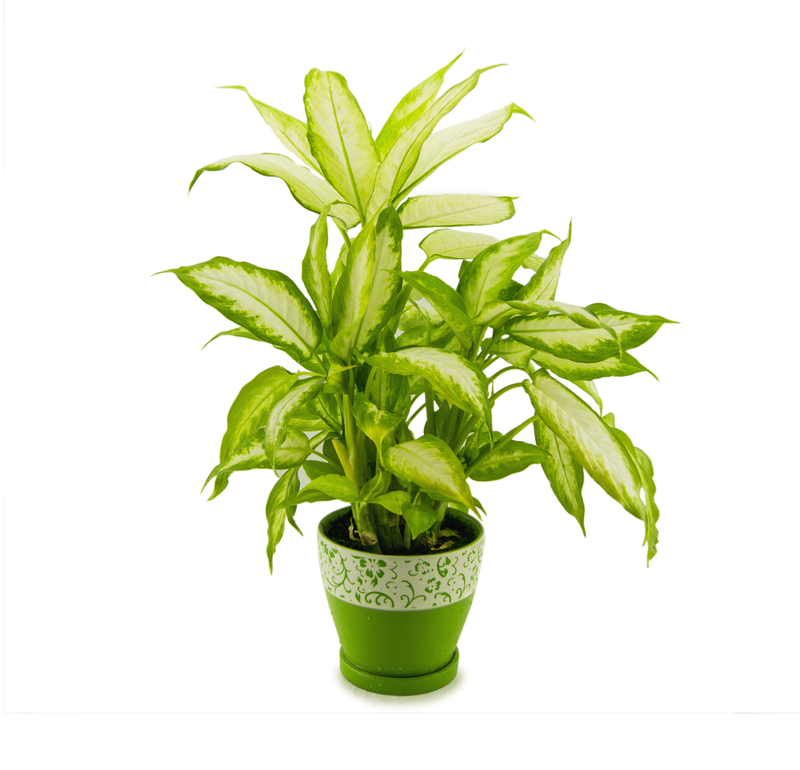Gardener's Guide: 3 Essential Tips for Weed-Free Spaces
Posted on 06/06/2025
Gardener's Guide: 3 Essential Tips for Weed-Free Spaces
Achieving a weed-free garden is every gardener's dream. Weeds can quickly take over your beautiful space, robbing your plants of vital nutrients, water, and sunlight. Whether you're tending a vegetable patch, ornamental beds, or a sprawling lawn, learning the best practices for effective weed control will make a significant difference. In this comprehensive guide, we'll explore three essential tips to help you cultivate and maintain weed-free spaces all season long.
Why Is Weed Control Important?
Weeds compete directly with your desirable plants. They crowd out seedlings, harbor diseases and pests, and diminish the overall aesthetics of your landscape. Most importantly, weeds quickly multiply, making early and effective intervention crucial for weed-free gardens.
- Healthy Plant Growth: Fewer weeds mean your plants have access to more nutrients and water.
- Aesthetic Appeal: Weed-free landscapes are more visually pleasing and easier to manage.
- Less Pest Pressure: Many garden pests are attracted to weedy areas.
With that in mind, let's dive into our top tips for keeping your garden beds, lawns, and borders clear of these persistent intruders!

Tip 1: Prevent Weeds with Mulching and Ground Covers
The Power of Mulching for Weed Suppression
One of the most effective and eco-friendly methods for achieving weed-free gardening is mulching. Mulch acts as a protective barrier over the soil, blocking sunlight and preventing weed seeds from germinating.
- Organic Mulch: Materials like shredded bark, straw, grass clippings, or compost enrich the soil as they decompose while keeping weeds at bay.
- Inorganic Mulch: Stones, gravel, or landscape fabric can also prevent weed growth, especially in ornamental beds or walkways.
How to Apply Mulch for Maximum Weed Control:
- Clear Existing Weeds: Start with a clean slate by removing weeds before mulching.
- Spread Generously: Apply a 2-4 inch thick layer for best results. Thin layers may not offer sufficient coverage.
- Avoid Mulch Piling: Keep mulch pulled back from plant stems and tree trunks to prevent rot.
Mulching offers the added benefit of conserving soil moisture and regulating temperature, making it a multitasking marvel for weed-free garden spaces.
Effective Ground Covers as Living Mulch
Besides traditional mulch, dense groundcovers like creeping thyme, vinca, or ajuga serve as living mulch. These spreading plants shade the soil and make it harder for weed seeds to take hold.
- Low-Maintenance Solution: Once established, ground covers require very little care.
- Soil Improvement: Many ground covers add organic matter to the soil over time.
- Attractive Landscapes: Ground covers add color and interest in addition to suppressing weeds.
Remember: Choose ground covers appropriate for your climate and light conditions for optimal weed prevention.
Tip 2: Stay Diligent with Regular Weed Removal
Best Practices for Hand-Weeding
While prevention is crucial, weeds will inevitably pop up. Regular hand-weeding is essential in any weed management strategy. Removing weeds before they set seed prevents exponential spread throughout your weed-free garden areas.
- Weed Early and Often: Tackle weeds when they're small and before they flower.
- Use the Right Tools: Invest in a hand fork, hoe, or dandelion digger for easier weeding. A sharp, narrow blade is perfect for getting to the roots.
- Pull After Rain: Moist soil makes it much easier to remove entire weed roots, reducing regrowth.
- Persistence Pays Off: Some weeds, such as bindweed or dandelion, have deep roots. Be vigilant and repeat removal as needed.
Tip: Keep a gardening bucket handy during your walkthroughs for quick spot-weeding sessions!
Safe Use of Herbicides for Targeted Weed-Free Lawns
If manual methods aren't sufficient -- for example, in large lawns -- spot-treating with selective herbicides can help maintain weed-free turf. Always follow label instructions, avoid drift onto desirable plants, and learn to identify weed seedlings for targeted removal.
- Selective Herbicides: These kill broadleaf weeds without harming grass. Ideal for lawns.
- Non-Selective Herbicides: Intended for driveways or gravel paths, but must be used sparingly to avoid contamination.
Many gardeners are now opting for organic or natural products for a healthier, eco-friendly garden.
Remember: Overuse of any chemical disrupts soil health and beneficial organisms. Use only when necessary for tough weed invasions.
Tip 3: Plan and Maintain a Dense, Healthy Garden
Dense Planting: Nature's Weed Blocker
Another essential tip for achieving weed-free garden areas is optimizing your plant spacing. The denser your plants, the less room weeds have to emerge. Think of your garden as a living mulch -- ideally, plants will form a continuous canopy over the soil, starving out weeds by shading them.
- Follow Spacing Guidelines: Check each plant's needs but err toward closer planting in beds prone to weeds.
- Layer Heights: Use ground covers, perennials, shrubs, and small trees together for maximum coverage and beauty.
- Succession Planting: Fill gaps quickly after harvesting vegetables to avoid bare soil.
The more vigorously your desirable plants grow, the fewer resources remain for opportunistic weeds.
Improve Soil Health for a Weed-Free Space
Healthy, living soil is the foundation of every successful, weed-free garden. When your soil is teeming with organic matter, nutrients, and beneficial microbes, your plants thrive and outcompete weeds with ease.
- Compost Regularly: Boosts fertility and encourages healthy plant roots, making it harder for weeds to establish.
- pH Balance: Many weeds thrive in poor or compacted soils. Test your pH and amend as necessary.
- Avoid Over-Tilling: Excessive turning of the soil brings dormant weed seeds to the surface. Try no-till gardening methods where possible.
Summary: A thriving, well-fed garden is naturally less susceptible to weed invasions. Treat your soil as the living ecosystem it is!
Bonus Strategies for Achieving Weed-Free Success
Start with Clean Seeds and Transplants
- Choose quality, certified weed-free seeds and plants. Many nurseries also offer "clean" compost and mulch free of weed seeds.
- Inspect new plants for hitchhiking weeds before adding them to your garden space.
Water Wisely
- Use targeted watering techniques, such as drip irrigation or soaker hoses. These deliver water directly to plant roots, not to open areas where weeds could sprout.
- Avoid overhead watering of entire beds, which encourages weed seeds between plants to grow.
Seasonal Maintenance for Weed-Free Gardens
- Spring: Deal with any winter weeds before planting and replenish mulch.
- Summer: Stay on top of fast-growing warm-season weeds, especially after rain.
- Fall: Pull out perennial weeds and tidy beds so you don't give weeds a head start next year.
- Winter: Use cardboard or black plastic to "smother" garden areas for spring planting.

Frequently Asked Questions about Weed-Free Gardening
Why do weeds come back so quickly?
Many common weeds have deep roots and a prolific seed bank in the soil. Staying vigilant and using layered prevention (mulching, dense planting, and quick removal) truly is the key to breakthrough weed management.
Is it possible to have a 100% weed-free garden?
While a completely weed-free landscape is rare, following the tips outlined above will minimize weeds dramatically. Sometimes one or two will still appear, but with the right tools and habits, you can keep your garden beds, lawns, and paths nearly pristine all year.
Are there eco-friendly solutions for weed control?
- Vinegar sprays, flame weeders, and boiling water can knock back young weeds in gravel or between pavers.
- Manual removal and organic mulching remain the most environmentally sound for most gardeners.
Final Thoughts: Enjoying a Weed-Free Outdoor Space
There's nothing quite like the satisfaction of a clean, weed-free garden area. By combining preventative measures like mulching, diligent removal, and smart planting, you'll spend less time fighting weeds and more time enjoying your lush, thriving garden.
Remember, every garden is unique -- adapt these tips to best suit your plants, climate, and gardening style!
Key Takeaways for Weed-Free Garden Spaces
- Mulch and ground covers are your first defense.
- Stay vigilant with regular weeding and only use herbicides when necessary.
- Promote dense, healthy, well-fed plantings for natural weed prevention.
- Maintain seasonal care to prevent weeds year-round.
No matter your experience level, following these essential tips for weed-free gardening will lead to healthier plants, a more attractive landscape, and less frustration. Start today and enjoy your beautiful, weed-free space all season long!

